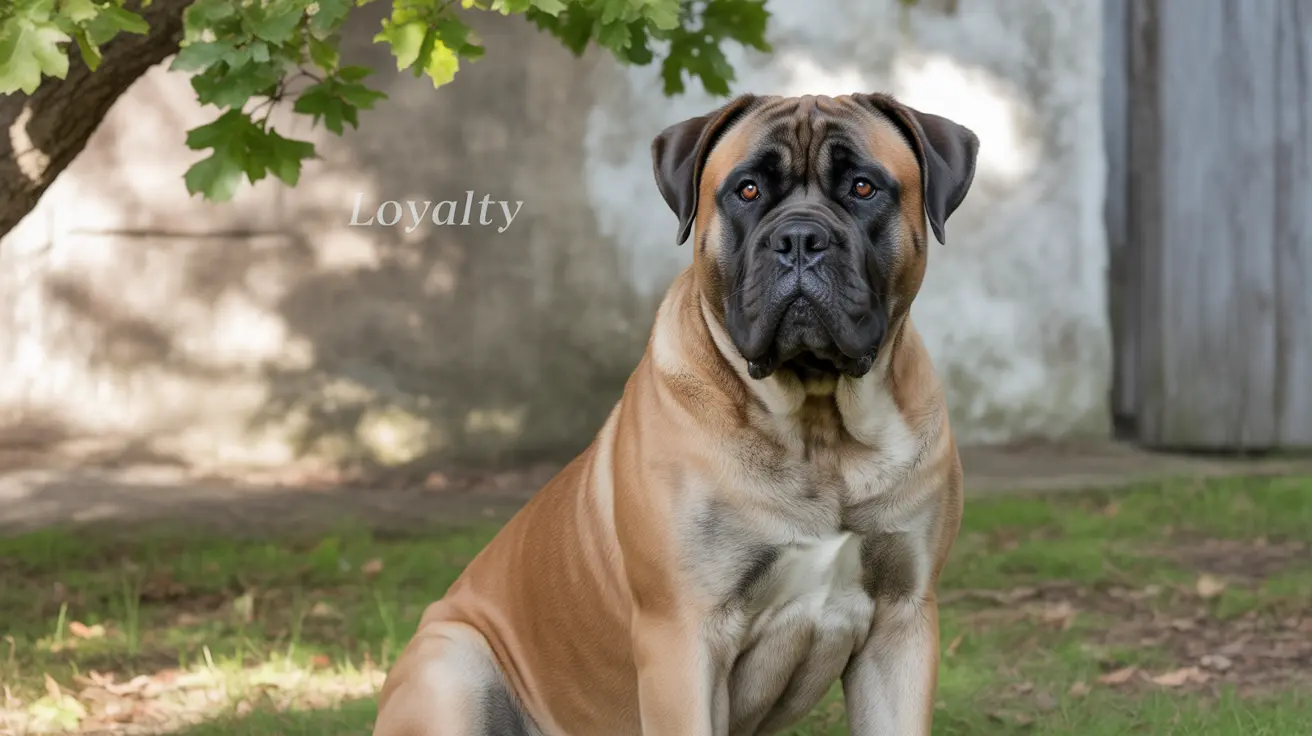The majestic Bullmastiff is known for its impressive stature and distinctive coat colors. Whether you're a breed enthusiast, prospective owner, or show competitor, understanding Bullmastiff colors is essential for appreciating these remarkable dogs. This comprehensive guide explores the officially recognized colors, patterns, and genetic factors that make each Bullmastiff unique.
Standard Bullmastiff Colors and Their Variations
The breed standard recognizes three primary colors: fawn, red, and brindle. Fawn ranges from light beige to deep golden, while red can vary from rich copper to deep cherry tones. Brindle isn't technically a color but a striking pattern of dark stripes overlaying a lighter base coat.
Every standard Bullmastiff must display the characteristic black mask, which extends across the muzzle and often reaches the eyes. This mask is not just an aesthetic feature but a defining characteristic of the breed standard.
The Significance of Base Colors
Fawn Bullmastiffs typically showcase the clearest expression of the breed's color genetics. The shade can range from light golden to a deeper, warmer tone, always accompanied by the distinctive black mask. Red specimens display a richer, more intense coloration that can deepen with age.
Understanding Brindle Patterns
Brindle Bullmastiffs exhibit dark striping patterns that can vary significantly in intensity. Some dogs show subtle striping, while others appear almost solid dark due to heavy brindling. The pattern's density can range from sparse stripes to a thick overlay that nearly obscures the base color.
Acceptable Color Combinations
- Red brindle
- Red fawn
- Red fawn brindle
Color Standards and Show Requirements
For show purposes, all Bullmastiffs must display clear, rich coloring without any muddiness or mixing. The black mask is mandatory, and while a small white chest patch is acceptable, extensive white markings are considered faults.
Common Color Faults
- Absence of black mask
- Excessive white markings
- Black coat color
- Blue or liver coloring
- Dilute colors
Genetics Behind Bullmastiff Colors
Bullmastiff coloring is controlled by specific genetic markers. The sable gene produces the classic fawn and red colors, while the brindle pattern is created by a separate genetic factor. The black mask is controlled by a specific melanistic mask gene, essential for breed standard compliance.
Frequently Asked Questions
What are the official Bullmastiff coat colors recognized by breed standards?
The officially recognized Bullmastiff colors are fawn, red, and brindle, along with combinations like red brindle and red fawn. All must display a black mask to meet breed standards.
How can I distinguish between fawn, red, and brindle Bullmastiff colors?
Fawn appears as a light to medium tan color, red shows as a deeper, richer copper tone, and brindle displays dark striping over a lighter base coat. The distinction is clearest in natural daylight.
Why is the black mask important in Bullmastiff color standards?
The black mask is a defining characteristic of the breed and is required by all major kennel clubs. It serves as both a historical trait and a key identifier of purebred Bullmastiffs.
Are there any Bullmastiff colors or markings that are considered faults or non-standard?
Yes, black coats, excessive white markings, blue or liver coloring, and absence of the black mask are all considered faults under breed standards.
Do Bullmastiff puppies change color as they grow, and when do they show their adult coat?
Yes, Bullmastiff puppies often show darker or different shades than their adult color. The final coat color typically settles during the first year of life, usually by 12 months of age.
Understanding Bullmastiff colors helps owners and breeders maintain the breed's distinguished appearance while preserving its historical legacy. Whether choosing a companion or showing professionally, knowledge of these color standards ensures appreciation for these magnificent dogs' proper breeding and presentation.






